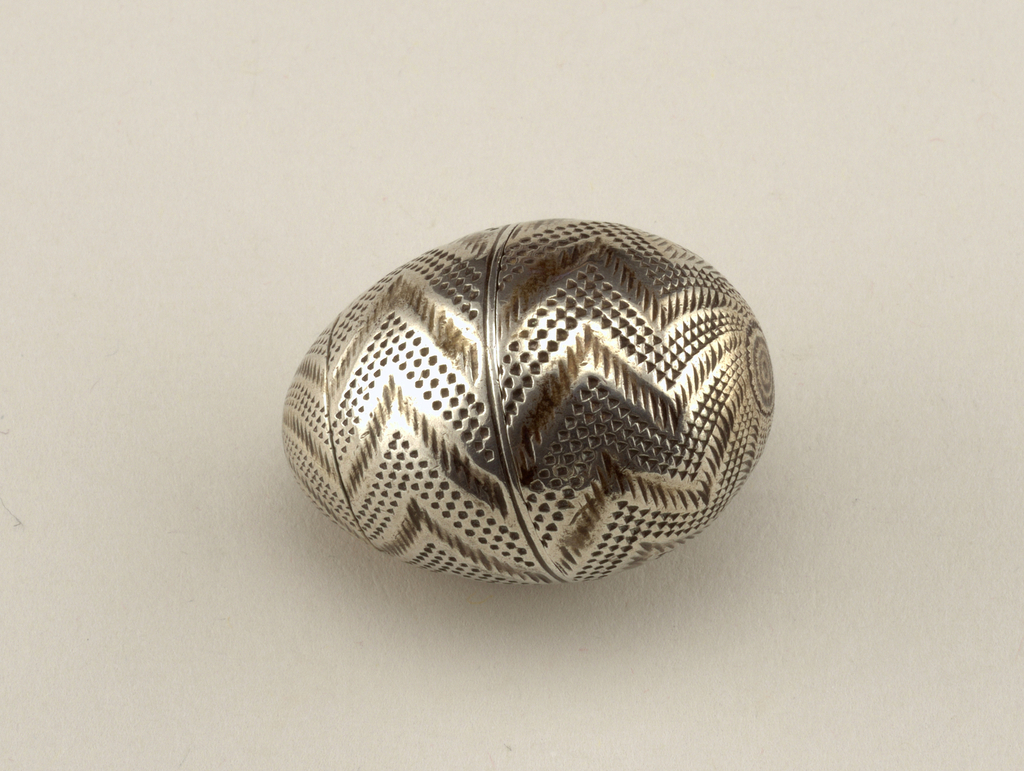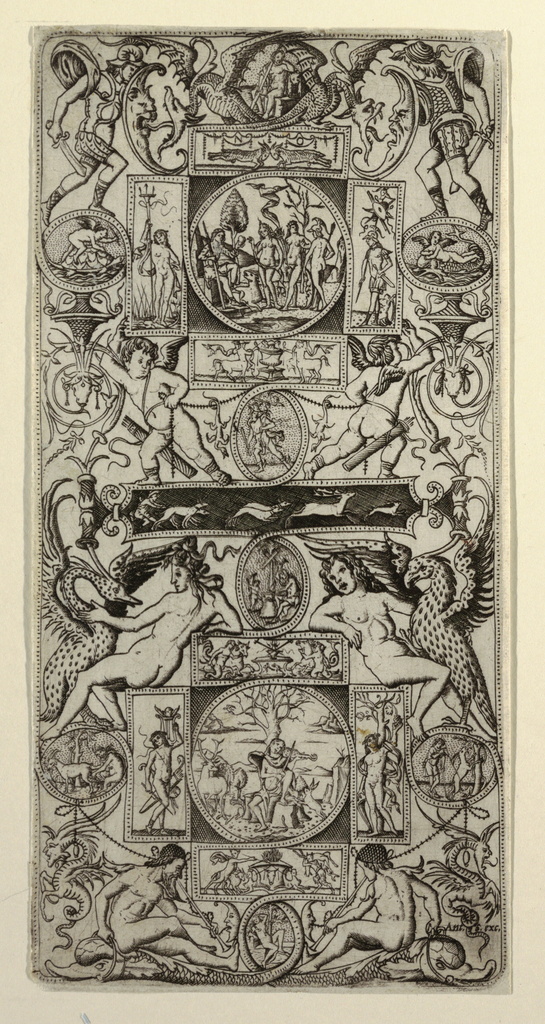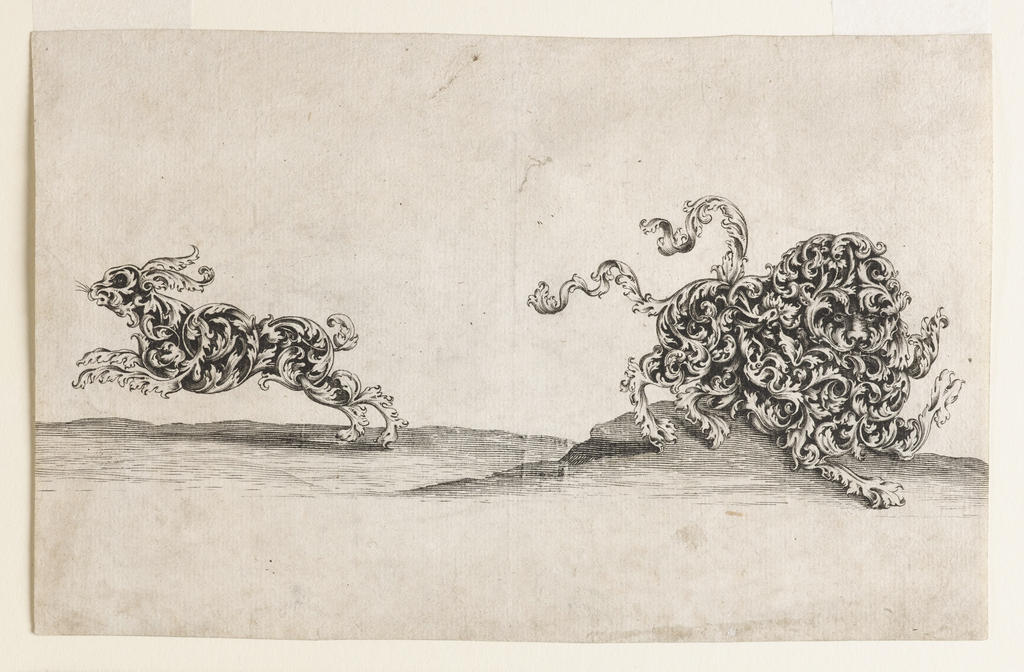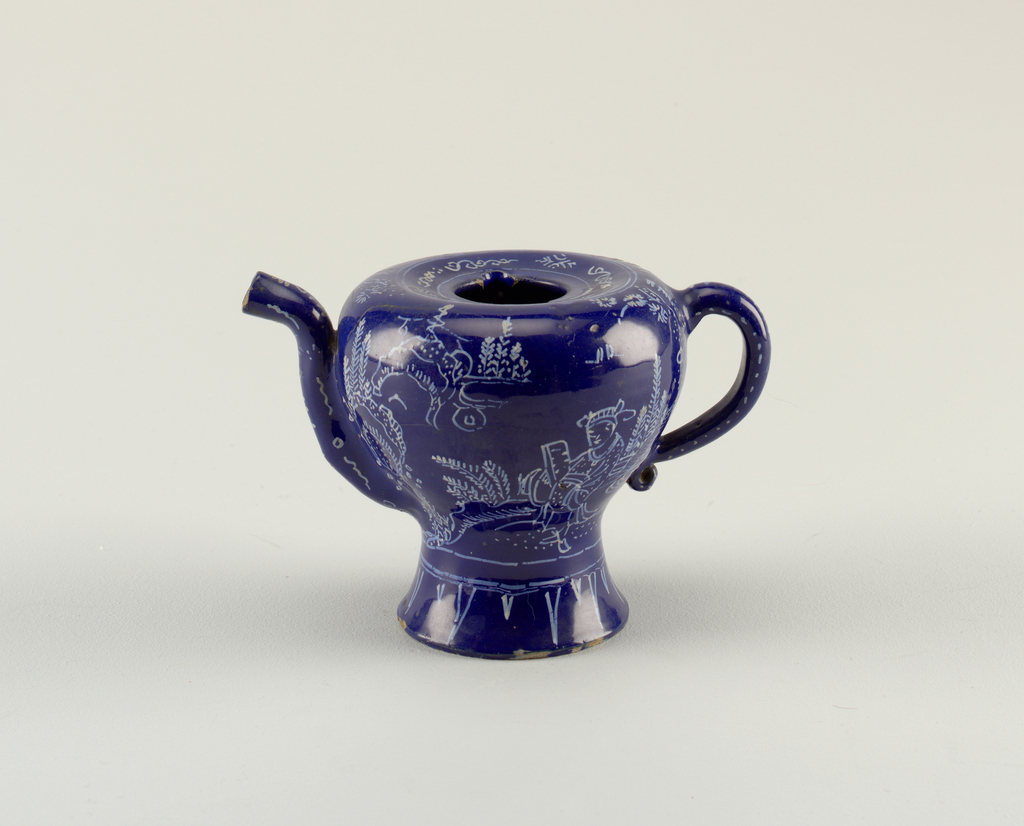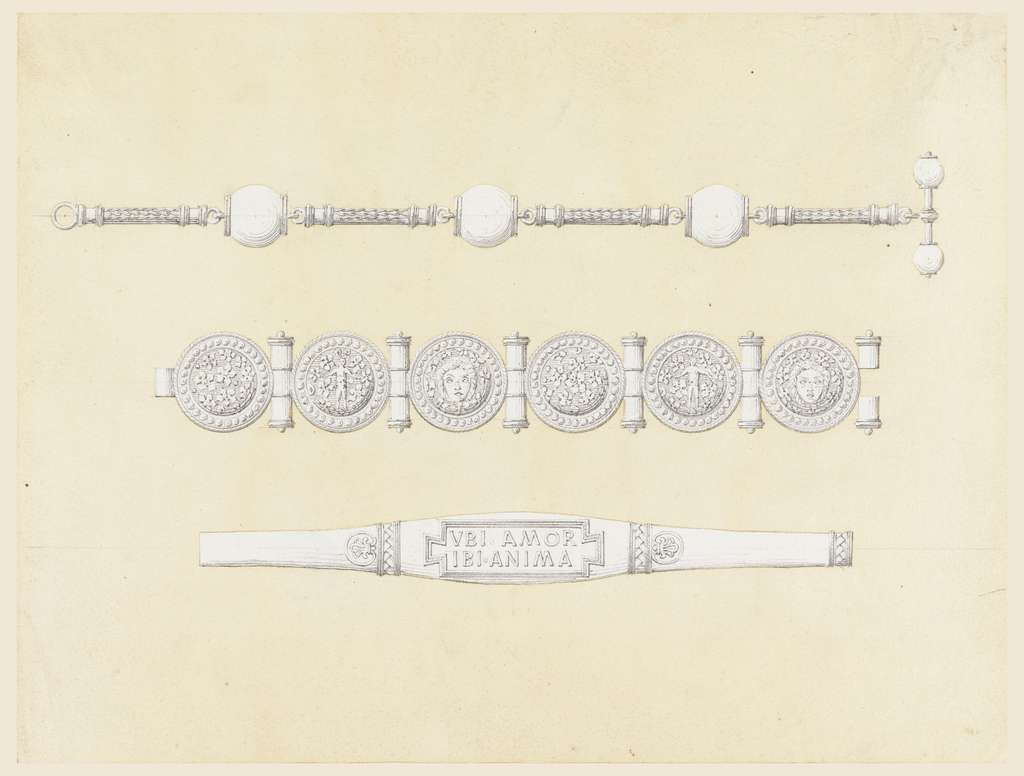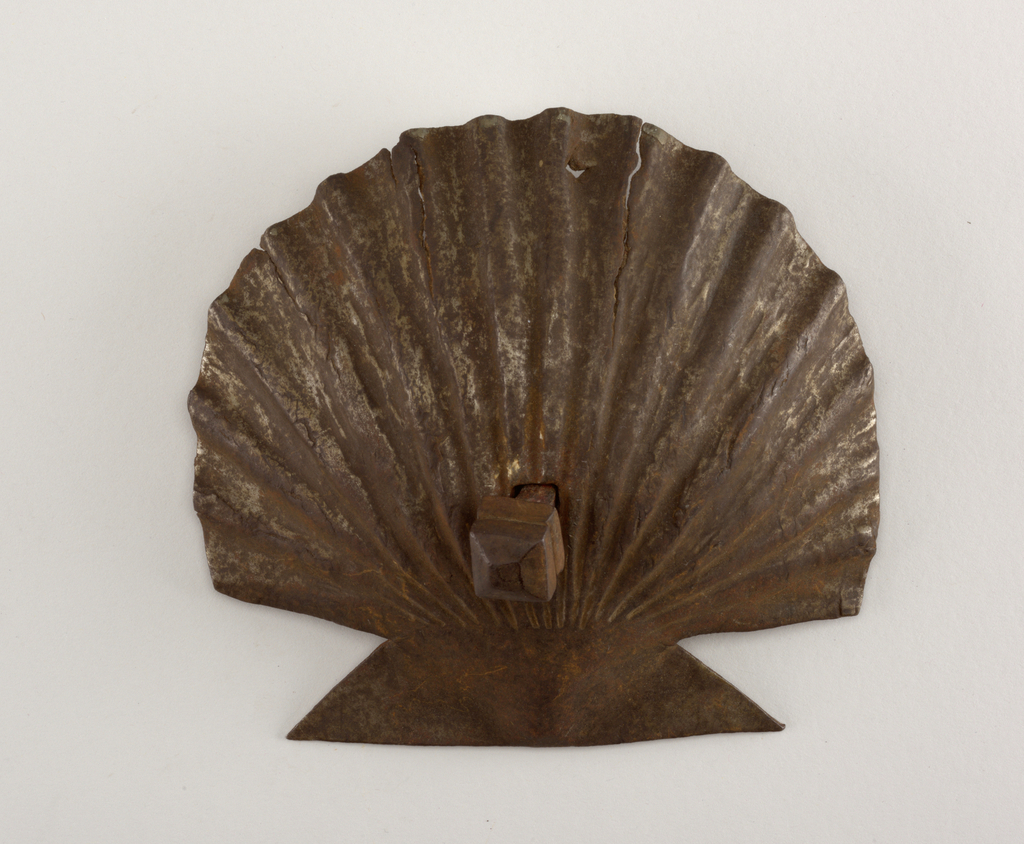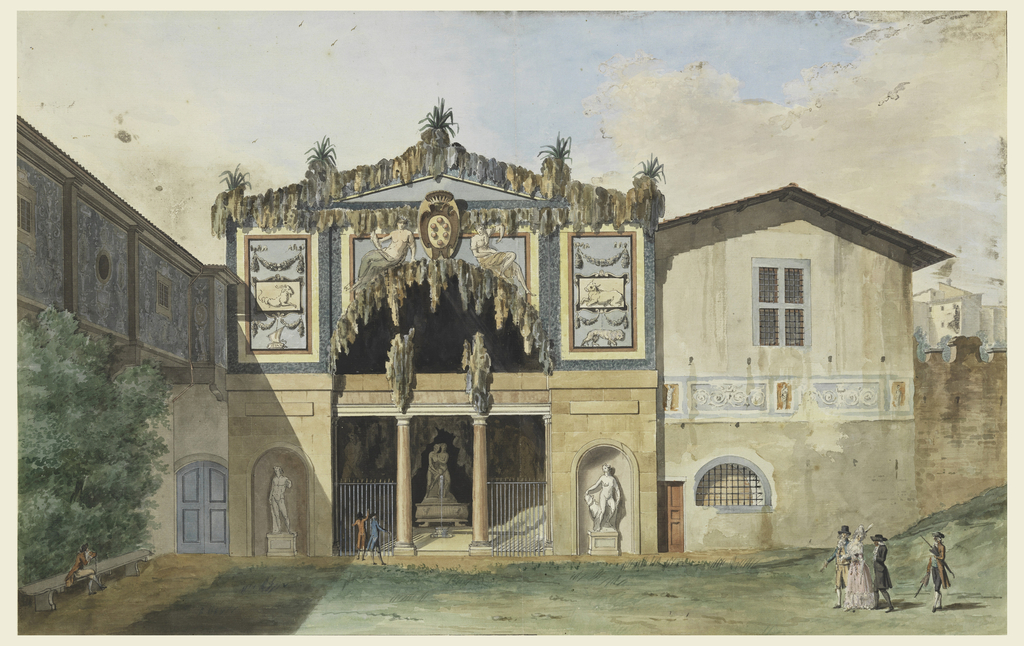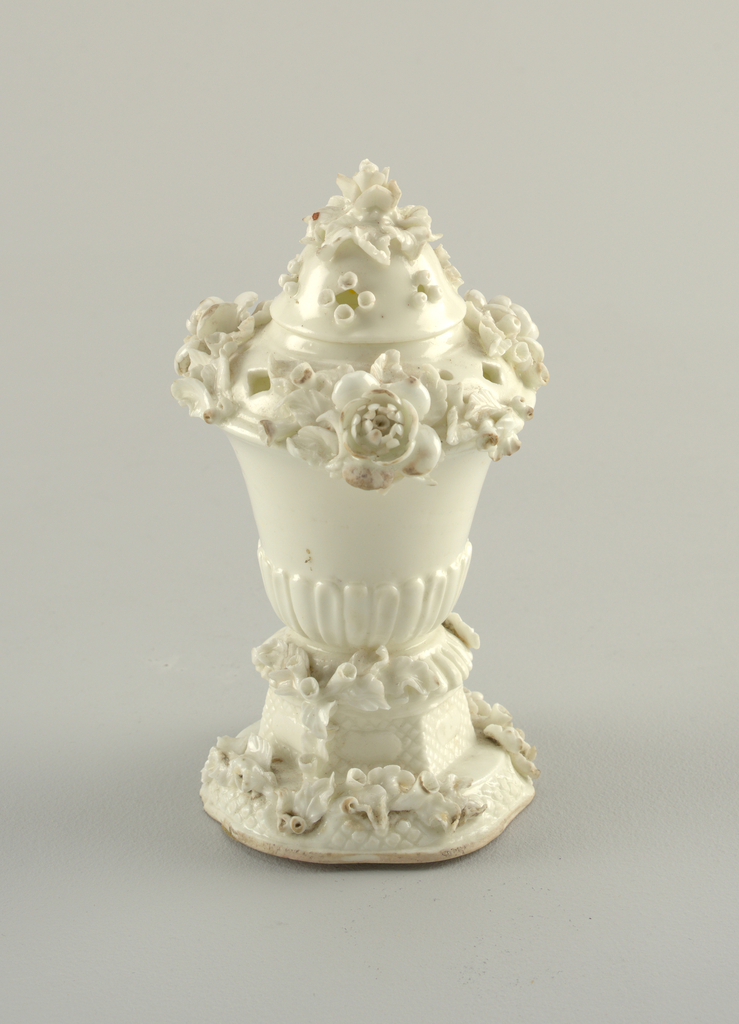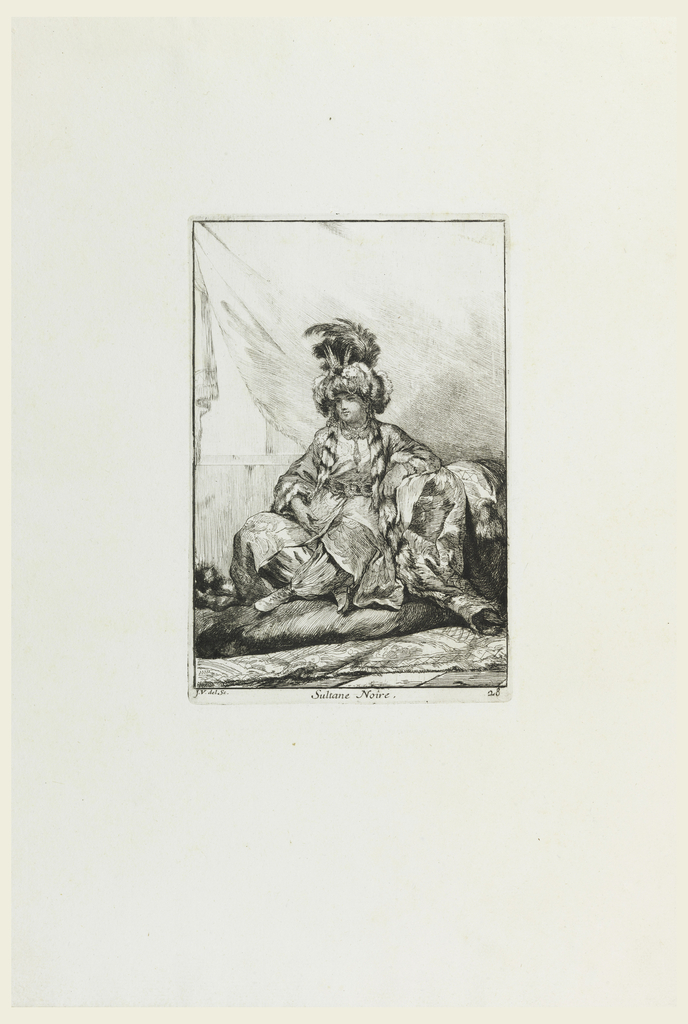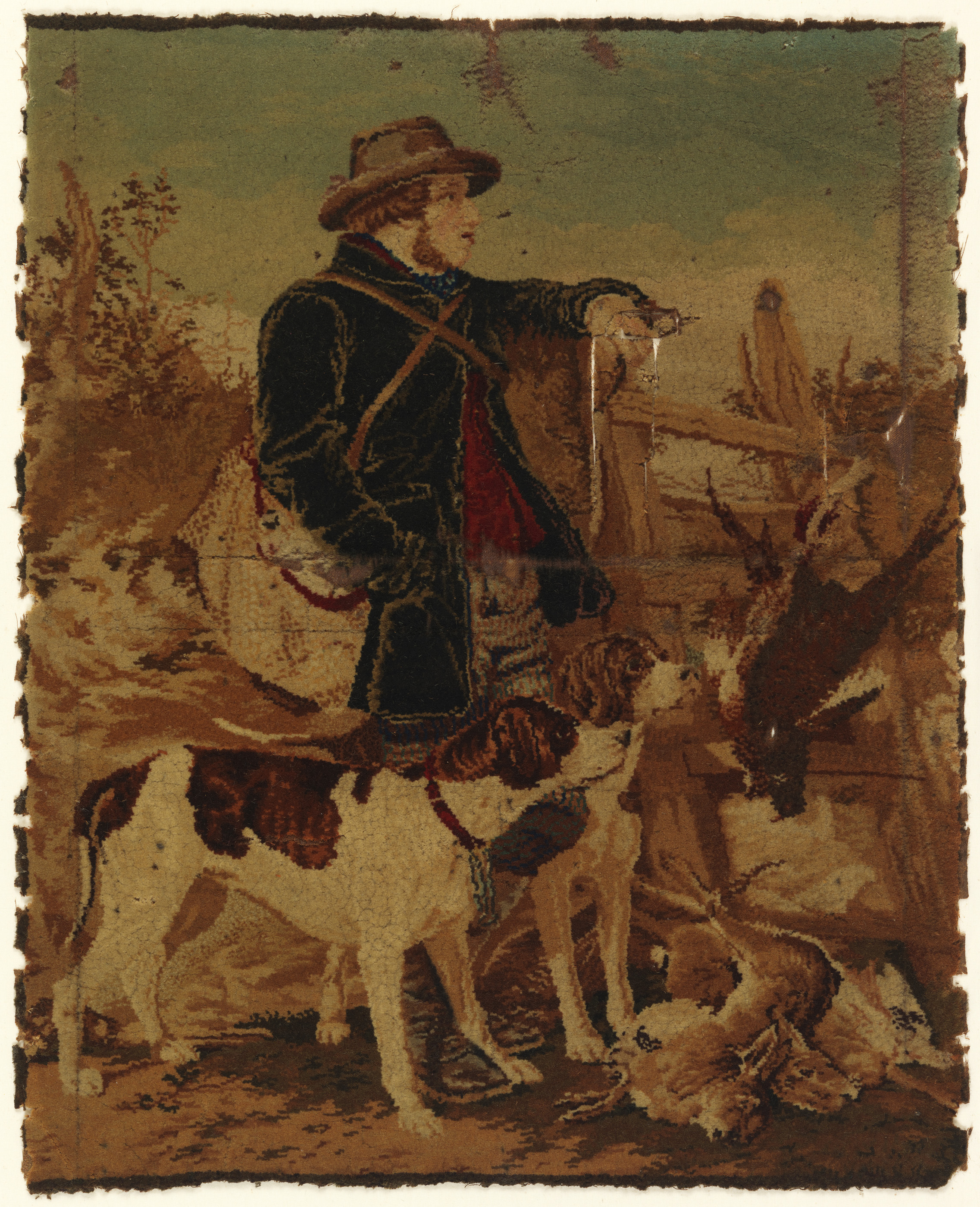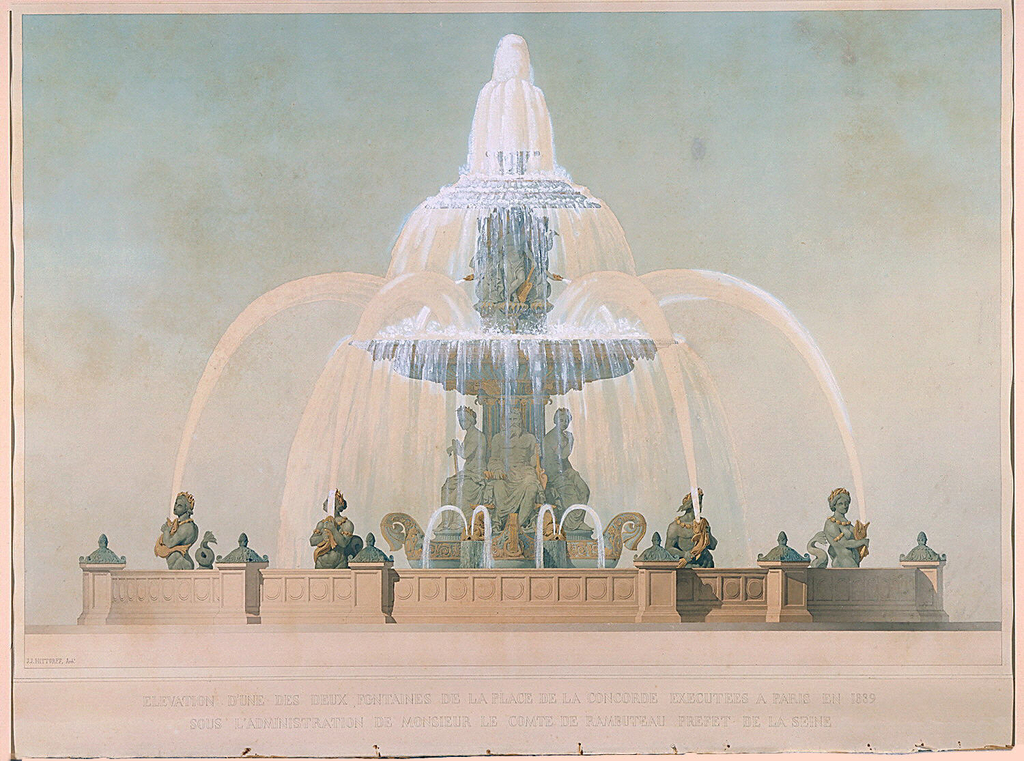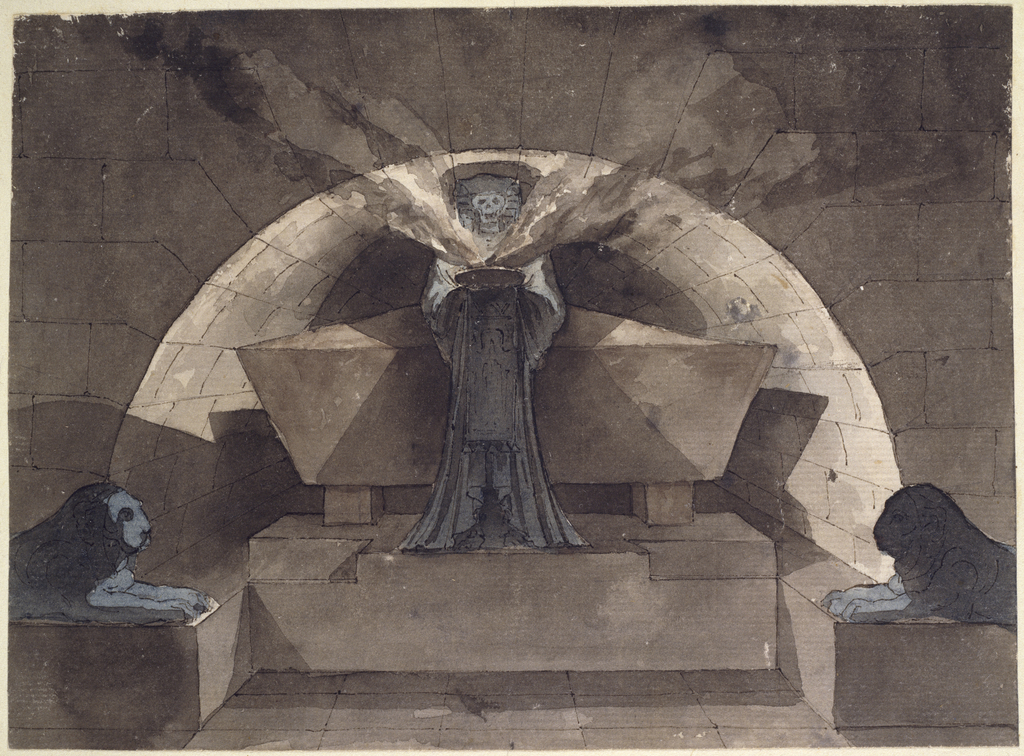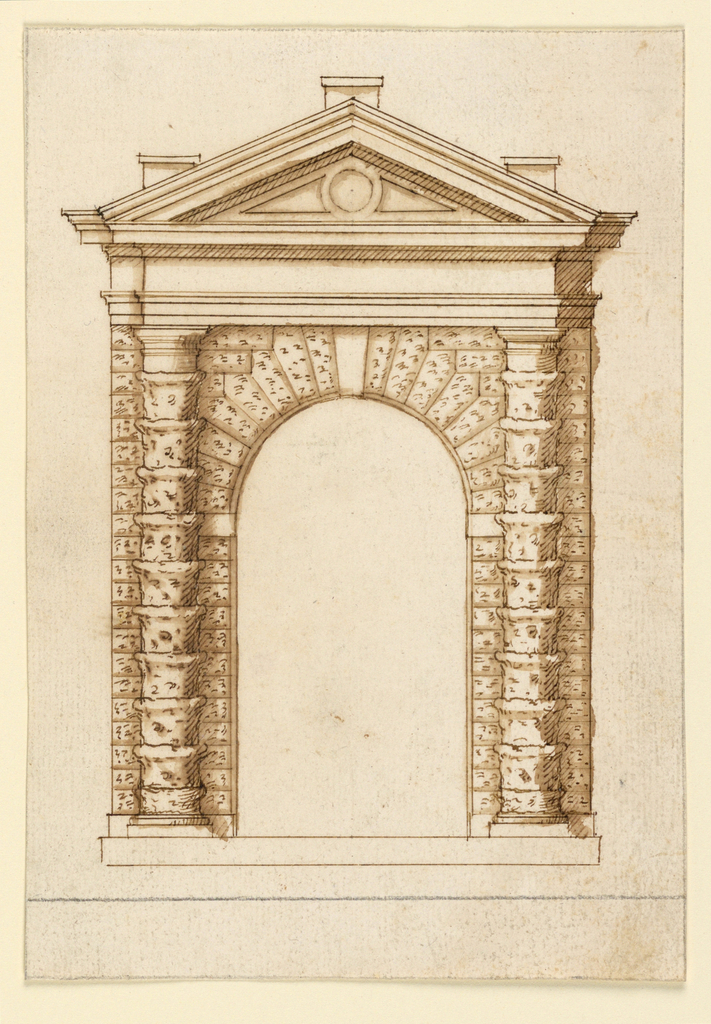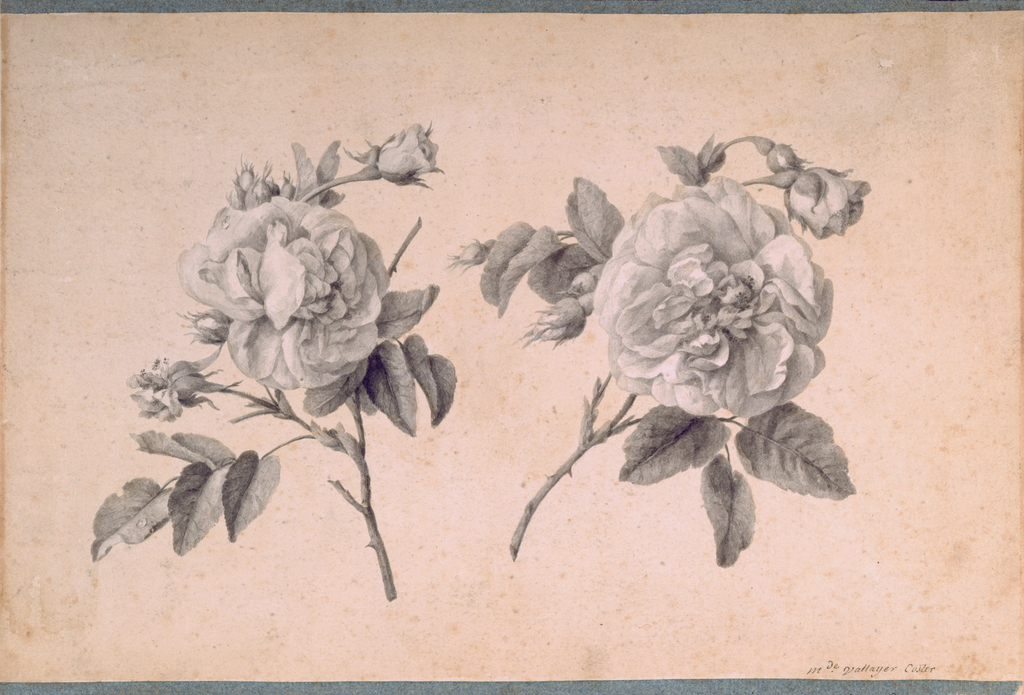Fainting was a common occurrence among nineteenth-century women who tight-laced their corsets, thus restricting both deep breathing and the sufficient consumption of food. Victorian publications warned that fainting could also be induced by sudden and violent emotions, powerful odors and “derangement of the bowels” (a wonderful phrase). Recovery was accelerated by lying horizontally while sprinkling...
Some of the most common elements found in grotesque designs are pairs of contorted nudes known as ignudi (plural of ignudo). In many designs, figures assume postures that are variations or counterposes of their lateral mate’s. Like the grotesque motif itself, these compliant figures invite the artist to invent, exaggerate, and rearrange their parts into endless...
A lion and a hare are composed entirely of scrolling acanthus leaves in this late-seventeenth-century engraving. It is the fifth plate from a suite of six designs for gold ornament, entitled Neu-ersonnene Gold-Schmieds Grillen (New Designs for Ornaments in Gold). The acanthus motif, whose origins date to ancient Greece and Rome, was omnipresent in European...
The decoration of this coffee pot, with its solid ground of cobalt blue, is of a type known as “bleu persan”, after a style of Persian ceramics imported to Europe in the late seventeenth century. Cobalt is one of the few compounds capable of withstanding high kiln temperatures, and consequently is the ideal medium for...
Capitalizing on growing nationalism after Italy’s unification in 1870, the Castellani jewelry company coined the term “Italian archeological jewelry.” Their copies of ancient Etruscan, Greek, and Roman works appealed to erudite consumers in Europe and America, accommodating nineteenth-century tastes for revival styles. Although based in Rome, the company promoted their designs abroad and won acclaim at...
Since the ninth century, pilgrims traveling to Santiago de Compostela in Spain have followed a route marked by scallop shells. The Way of Saint James has lead thousands of pilgrims on foot across the Iberian Peninsula to visit the relics of the Apostle James, who was martyred in 44 C.E. The journey became especially popular...
In the eighteenth century, many Italian artists produced views of popular tourist destinations to sell as souvenirs to travelers on the Grand Tour. This drawing by an unknown artist shows the Grotta Grande in the Boboli Gardens of Florence. Visible within the grotto’s chambers are Paris and Helena, sculpted in 1560 by Vincenzo di Rafaello...
The unpainted surface of this perfume burner draws attention to the milky whiteness of the ceramic body. In the mid-eighteenth century, the right to use gold on ceramics was the exclusive privilege of the Vincennes manufactory, compelling Mennecy and other French factories to focus on the sculptural aspect of their production. Unpainted, glazed porcelain became...
In preparation for the festivities of Carnival in 1748, a group of students at the French Academy in Rome conspired to dress collectively as Turkish men traveling in a sultan’s caravan to Mecca. The pensionnaires crafted homemade costumes, painting linen to resemble sumptuous brocades and hanging oversized turbans with faux pearls and feathers. Their fantastic...
By the middle of the nineteenth century the Industrial Revolution was in full swing. British manufacturers of all kinds developed innovative techniques to produce goods for an ever-growing global consumer base. Many successful companies developed artistic sidelines that utilized their established resources in experimental ways. John Crossley & Son was one of the largest carpet...
This splendid presentation drawing was prepared for the prestigious civic commission to redesign the Place de la Concorde, one of the great public squares of Paris. When the viceroy of Egypt, Muḥammad ʿAlī, offered France an obelisk from the reign of Ramses II as a gift in 1831, the German-born designer Jakob Ignaz Hittorff was...
In this atmospheric drawing, the robed figure of Death holds a smoking brazier and presides over a tomb cast in a gray wash. Stark shadows describe the geometric forms of a massive sarcophagus and sepulchral niche. The simplicity of the somber interior evokes the proportions of Egyptian architecture, as well as that ancient culture’s fascination with death. Louis-Jean...
Rusticated masonry was first used in the classical world. It is characterized by stones cut with a deliberately rough surface, and wide sunken joints between blocks. The Ancient Romans typically employed coarse stone in public structures such as city walls and aqueducts. However, during the reign of Emperor Claudius (41 – 54 C.E.), rusticated stonework...
In celebration of Women’s History Month, Cooper Hewitt is dedicating select Object of the Day entries to the work of women designers in our collection. Two delicate roses nestle on a creamy ground. Although drawn in grisailles, a monochromatic pallet of grays and black, the flowers achieve an astonishing realism. Anne Vallayer-Coster was a master...
This fan commemorates in an interesting moment in early American foreign policy. During the eighteenth century, amidst the feverish rivalries of the European state system, various nations competed to dominate the world’s oceans. After the United States achieved independence, its political leaders championed the view that the seas should be free and common to all...
